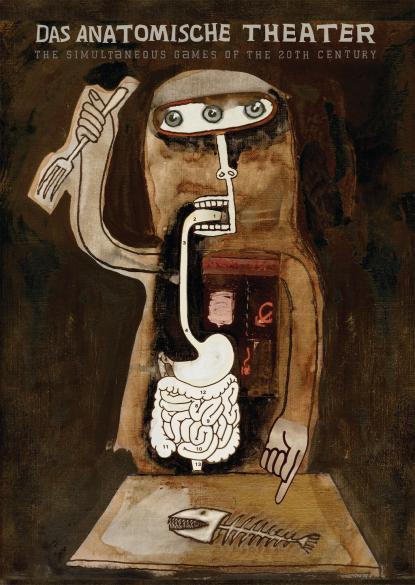2025. April 5. Saturday
Kunsthalle - Budapest
 |
Address: 1146, Budapest Dózsa György út 37.
Phone number: (1) 460-7000, (1) 363-2671
E-mail: info@mucsarnok.hu
Opening hours: Tue-Wed 10-18, Thu 12-20, Fri-Sun 10-18
|
The exhibition has closed for visitors.
2011.12.11. - 2012.01.08.
Museum tickets, service costs:
|
Ticket for adults
|
1200 HUF
|
|
|
Ticket for adults
(valid for the Kunsthalle and the Ernst Museum)
|
1400 HUF
|
|
|
Group ticket for adults
(from over 10 people)
|
800 HUF
|
/ capita
|
|
Ticket for students
(EU citizens from the age of 6 to 26 )
|
600 HUF
|
|
|
Ticket for students
(valid for the Kunsthalle and the Ernst Museum, 6-26 years of age)
|
700 HUF
|
|
|
Group ticket for students
(from over 10 people)
|
400 HUF
|
/ capita
|
|
Ticket for pensioners
(valid for the Kunsthalle and the Ernst Museum, 62-70 years of age)
|
700 HUF
|
|
|
Ticket for pensioners
(EU citizens from the age of 62 to 70)
|
600 HUF
|
|
|
Ticket for families
(1 adults + 2 children)
|
1800 HUF
|
/ family
|
|
Ticket for families
(2 adults + 2 children)
|
2400 HUF
|
/ family
|
Milorad Krstic has been working on "Das Anatomische Theater: Simultaneous Games in the Twentieth Century" (DAT) for more than ten years. The ongoing project is a collection of hundreds of works of art.

DAT consists of several phases. The individual pieces of the collection and its overall organizing principle make DAT a kind of a postmodern Gesamtkunstwerk*, which appears in a variety of forms.
It is a subjective visual encyclopaedia of the 20th century, a theatre of history and historical experience. One of its professed objectives is to reintroduce the Dadaist perspectives of simultaneity and holism to the stage of history. These perspectives are applied to both the genuine facts of history and the interpretation of the century’s scientific and artistic achievements.
It is a fundamental intellectual task for the 21st century to understand, come to terms with, and formulate the heritage of the 20th century. DAT employs an individual perspective, as well as an unmistakable style and principle of selection, in its presentation of the last century.
*relationship to other fields of knowledge (history, philosophy, literature, the sciences, technology, design, etc.)
During the exhibition you can visit in several dates the show Ruben Brandt.

DAT consists of several phases. The individual pieces of the collection and its overall organizing principle make DAT a kind of a postmodern Gesamtkunstwerk*, which appears in a variety of forms.
It is a subjective visual encyclopaedia of the 20th century, a theatre of history and historical experience. One of its professed objectives is to reintroduce the Dadaist perspectives of simultaneity and holism to the stage of history. These perspectives are applied to both the genuine facts of history and the interpretation of the century’s scientific and artistic achievements.
It is a fundamental intellectual task for the 21st century to understand, come to terms with, and formulate the heritage of the 20th century. DAT employs an individual perspective, as well as an unmistakable style and principle of selection, in its presentation of the last century.
*relationship to other fields of knowledge (history, philosophy, literature, the sciences, technology, design, etc.)
During the exhibition you can visit in several dates the show Ruben Brandt.
